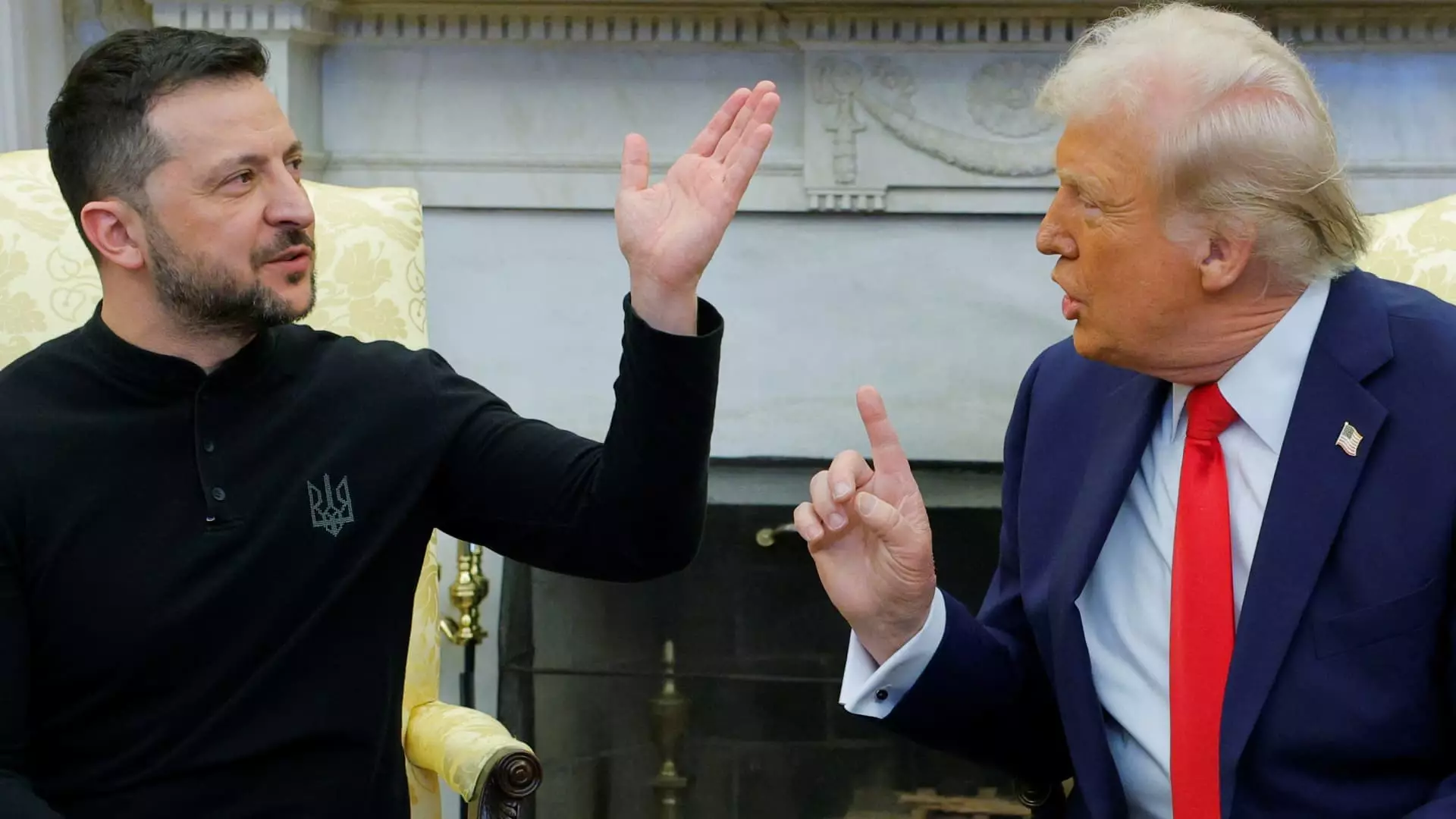In a moment encapsulating the ongoing tumult of international diplomacy, President Donald Trump’s recent confrontation with Ukrainian President Volodymyr Zelenskyy in the Oval Office has sparked discussions across political and media spectrums. This scenario, marked by heated exchanges and an unusual lack of decorum from a visiting foreign leader, highlights the complexities and sensitivities inherent in U.S.-Uranian relations, especially against the backdrop of Russia’s ongoing aggression.
The confrontation unfolded during a turbulent meeting where body language and tonal inflections became focal points of criticism. White House Press Secretary Karoline Leavitt noted that it wasn’t just what Zelenskyy said, but how he articulated his points, which seemed to irk Trump. Specifically, Zelenskyy’s gestures—arms crossed, eyes rolling—established a nonverbal narrative of discord that starkly contrasted with expected diplomatic decorum.
Such behavior not only reflects the gravity of international stakes but also illustrates an underlying tension that runs deeper than mere disagreement. In diplomatic circles, especially in an environment as formal as the Oval Office, the perception of respect is paramount. The Ukrainian leader’s choice to refer to Vice President JD Vance as “JD” instead of the more formal “Mr. Vice President” added fuel to the fire, inviting scrutiny over whether Zelenskyy’s approach was appropriate for the moment.
The meeting devolved further when Zelenskyy called into question whether Russia could genuinely be trusted in any prospective peace negotiations. This direct challenge prompted a defensive reaction from Vance, who reprimanded Zelenskyy for what he perceived as disrespect. By positioning himself as a critic of Russia’s reliability, Zelenskyy struck at the heart of the tension between aggressive military posturing and the fragile hopes for diplomatic resolution—a core element of contemporary geopolitical strategy.
Interestingly, the clash over diplomatic niceties is compounded by the backdrop of Ukraine’s struggle against invasion. It raises an important question: what constitutes respect and decorum when a nation is under siege? While the U.S. has positioned itself as a staunch ally of Ukraine, the contrasting expectations of etiquette between a leader at war and representatives of a superpower can create complex dynamics.
Another peculiar facet of the fallout was Zelenskyy’s choice of attire—a casual black sweater emblazoned with the national symbol of Ukraine. This sartorial decision became a sticking point, particularly when conservative media personnel criticized him for not donning formal attire appropriate for a high-level diplomatic visit. The exchange spiraled into a moment of levity tinged with irritation, as Zelenskyy cutely retorted that he would switch to formal wear “after this war is over.”
This commentary underscores the gravity of Ukraine’s situation while also challenging the existing conventions around diplomatic appearances. While some may argue that traditional attire conveys respect, dismissing the true urgency of the war and the dire circumstances inherent to Zelenskyy’s mission presents a narrow perspective of diplomacy.
Adding layers to the already complicated dynamics, Trump’s defense of Putin during this meeting further fueled the tension. By invoking past investigations and framing his administration’s relationship with Russia in a light that places blame elsewhere, Trump seemed to dismiss Zelenskyy’s legitimate concerns about security. This reaction was reminiscent of the previous impeachment scandal surrounding issues of foreign manipulation and direct pressure on Ukraine.
The examination of Trump’s past dealings with Ukraine serves as a sobering reminder of how intertwined political narratives can complicate diplomatic conversations. The allegations surrounding Hunter Biden, for example, have cast long shadows over U.S.-Uranian relations, introducing an element of mistrust that complicates promise of aid or international support.
The dust-up in the Oval Office acts as a microcosm of the larger war-torn reality that Ukraine faces, and it challenges the norms of how politics and diplomacy intersect in an age marked by conflict. This incident highlights two key aspects of international relations: the profound importance of respect in diplomatic exchanges and the complex interplay of tradition versus the pressing realities of crisis.
Ultimately, as international political landscapes continue to evolve and respond to crises, it will be vital for leaders to navigate these challenging waters with an understanding of both their own narrative and the sensitivities of the nations with whom they negotiate. The lesson here is that in matters of international urgency, the stakes are far too high to allow personal grievances or misinterpretations to overshadow mutual goals of peace and stability.


Leave a Reply